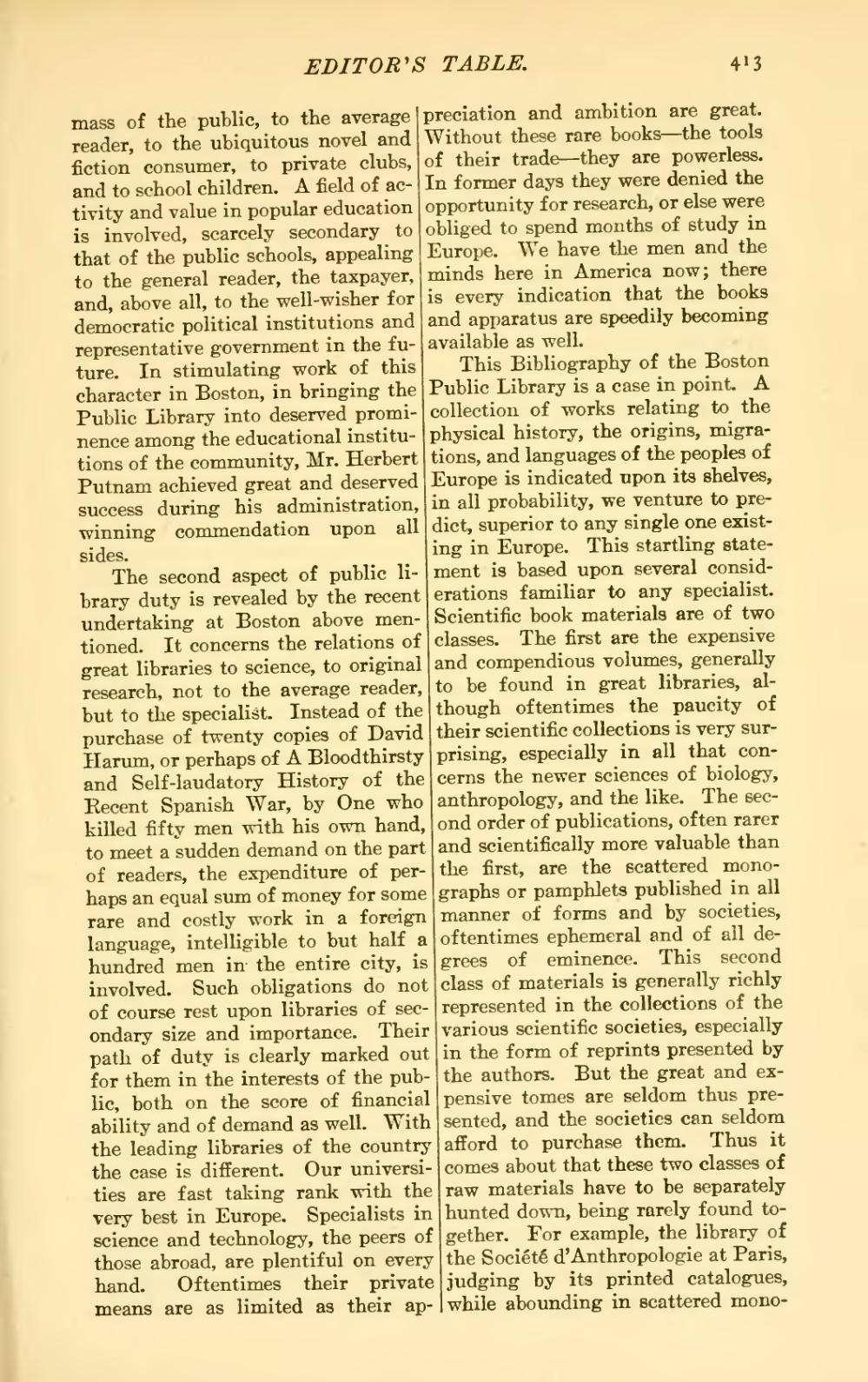mass of the public, to the average reader, to the ubiquitous novel and fiction consumer, to private clubs, and to school children. A field of activity and value in popular education is involved, scarcely secondary to that of the public schools, appealing to the general reader, the taxpayer, and, above all, to the well-wisher for democratic political institutions and representative government in the future. In stimulating work of this character in Boston, in bringing the Public Library into deserved prominence among the educational institutions of the community, Mr. Herbert Putnam achieved great and deserved success during his administration, winning commendation upon all sides.
The second aspect of public library duty is revealed by the recent undertaking at Boston above mentioned. It concerns the relations of great libraries to science, to original research, not to the average reader, but to the specialist. Instead of the purchase of twenty copies of David Harum, or perhaps of A Bloodthirsty and Self-laudatory History of the Recent Spanish War, by One who killed fifty men with his own hand, to meet a sudden demand on the part of readers, the expenditure of perhaps an equal sum of money for some rare and costly work in a foreign language, intelligible to but half a hundred men in the entire city, is involved. Such obligations do not of course rest upon libraries of secondary size and importance. Their path of duty is clearly marked out for them in the interests of the public, both on the score of financial ability and of demand as well. With the leading libraries of the country the case is different. Our universities are fast taking rank with the very best in Europe. Specialists in science and technology, the peers of those abroad, are plentiful on every hand. Oftentimes their private means are as limited as their appreciation and ambition are great. Without these rare books—the tools of their trade—they are powerless. In former days they were denied the opportunity for research, or else were obliged to spend months of study in Europe. We have the men and the minds here in America now; there is every indication that the books and apparatus are speedily becoming available as well.
This Bibliography of the Boston Public Library is a case in point. A collection of works relating to the physical history, the origins, migrations, and languages of the peoples of Europe is indicated upon its shelves, in all probability, we venture to predict, superior to any single one existing in Europe. This startling statement is based upon several considerations familiar to any specialist. Scientific book materials are of two classes. The first are the expensive and compendious volumes, generally to be found in great libraries, although oftentimes the paucity of their scientific collections is very surprising, especially in all that concerns the newer sciences of biology, anthropology, and the like. The second order of publications, often rarer and scientifically more valuable than the first, are the scattered monographs or pamphlets published in all manner of forms and by societies, oftentimes ephemeral and of all degrees of eminence. This second class of materials is generally richly represented in the collections of the various scientific societies, especially in the form of reprints presented by the authors. But the great and expensive tomes are seldom thus presented, and the societies can seldom afford to purchase them. Thus it comes about that these two classes of raw materials have to be separately hunted down, being rarely found together. For example, the library of the Société d'Anthropologie at Paris, judging by its printed catalogues, while abounding in scattered mono-
